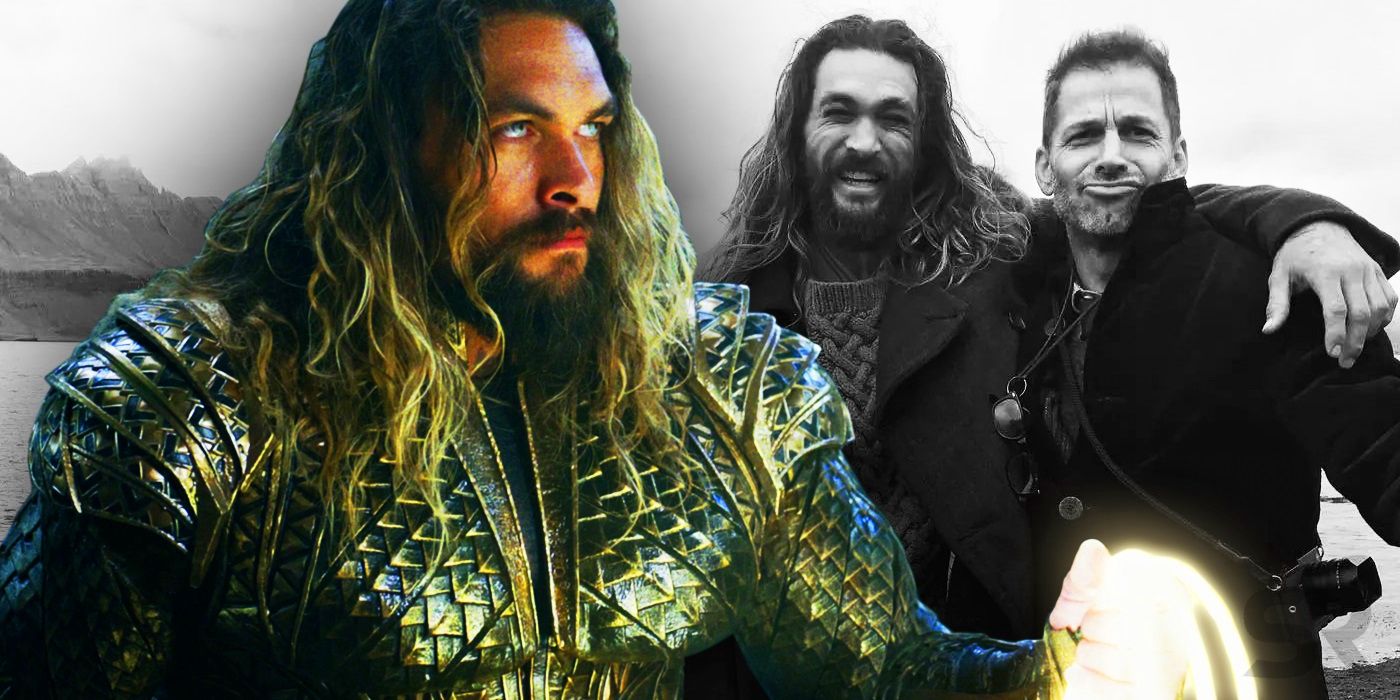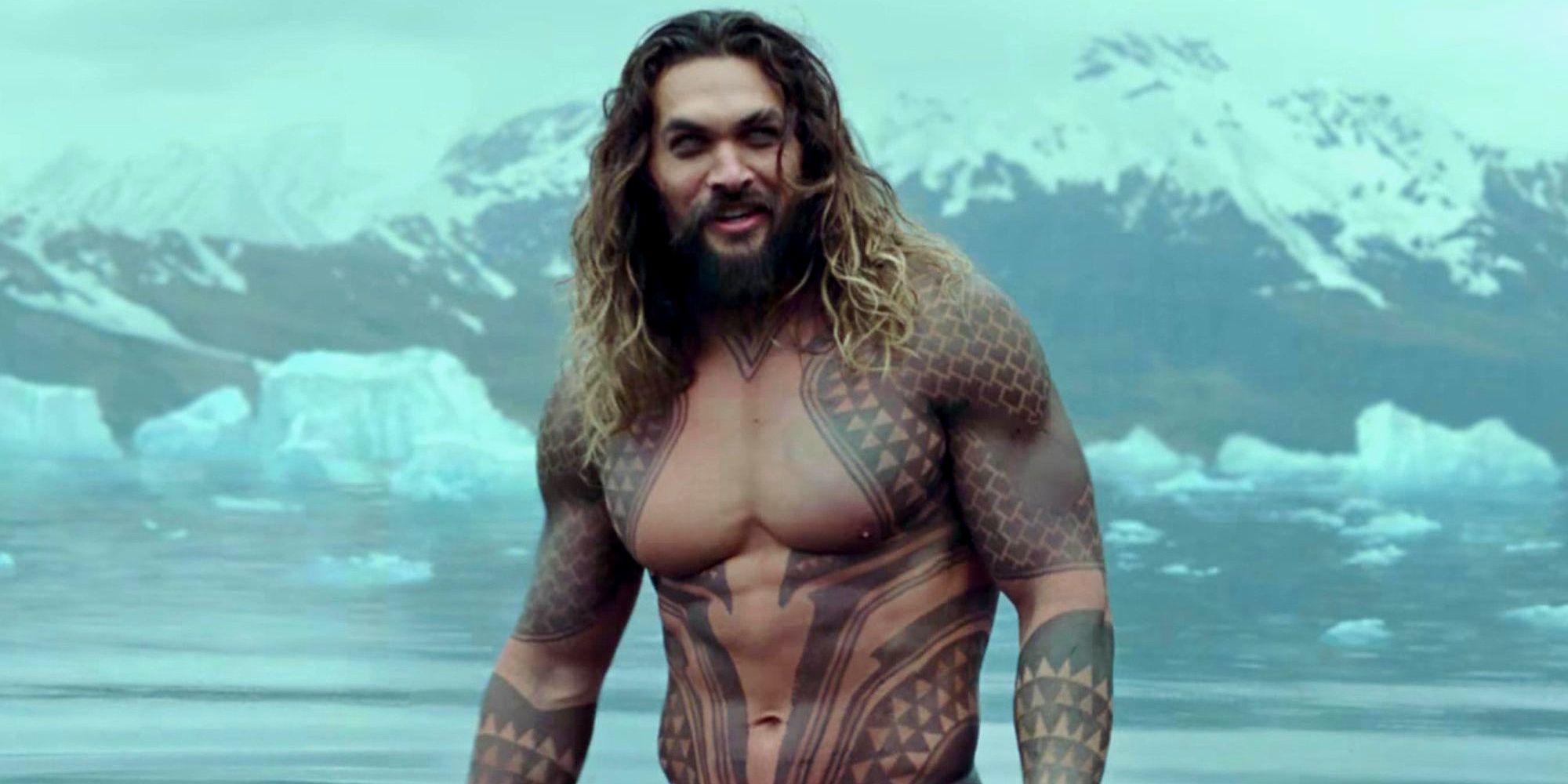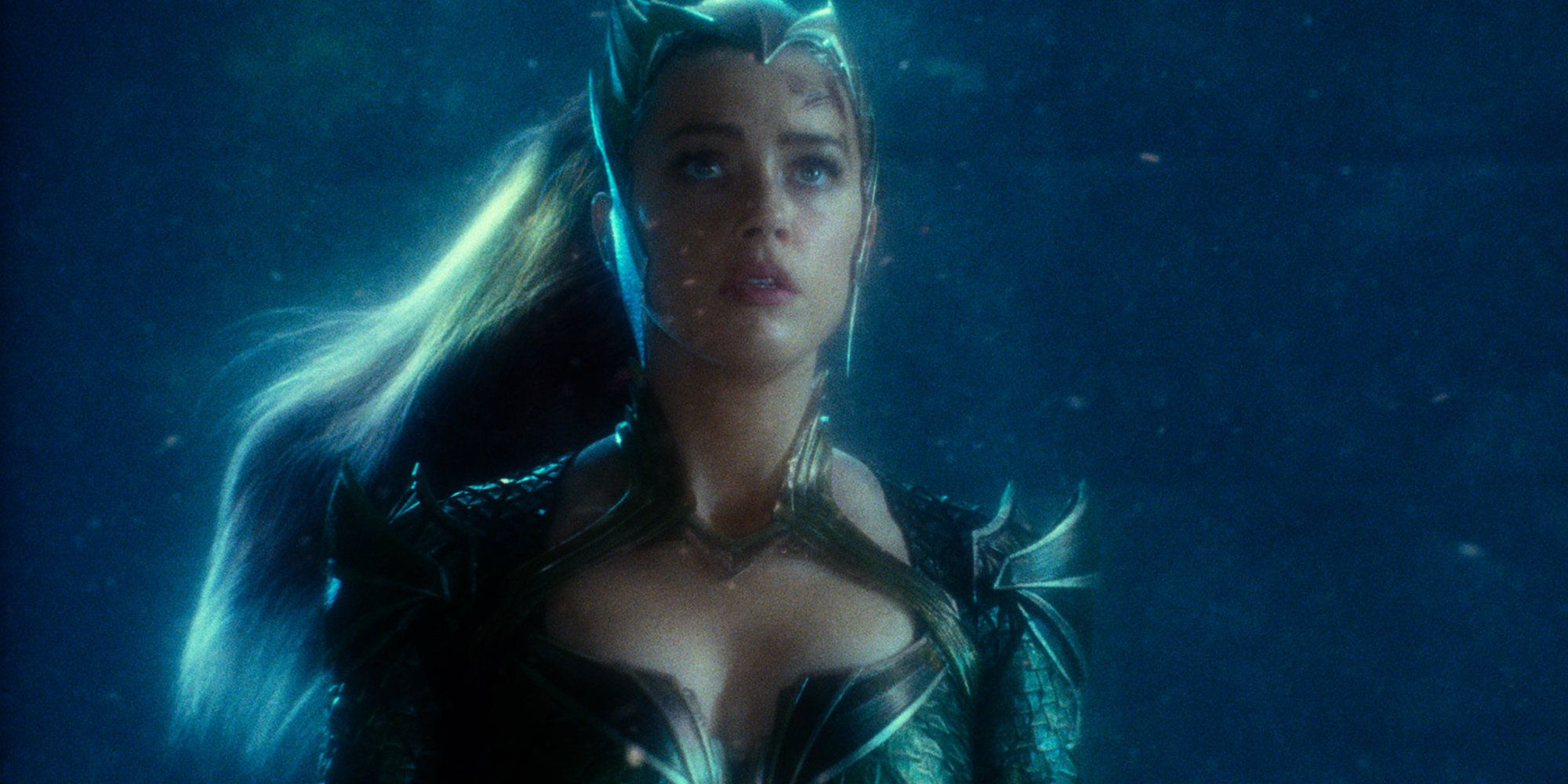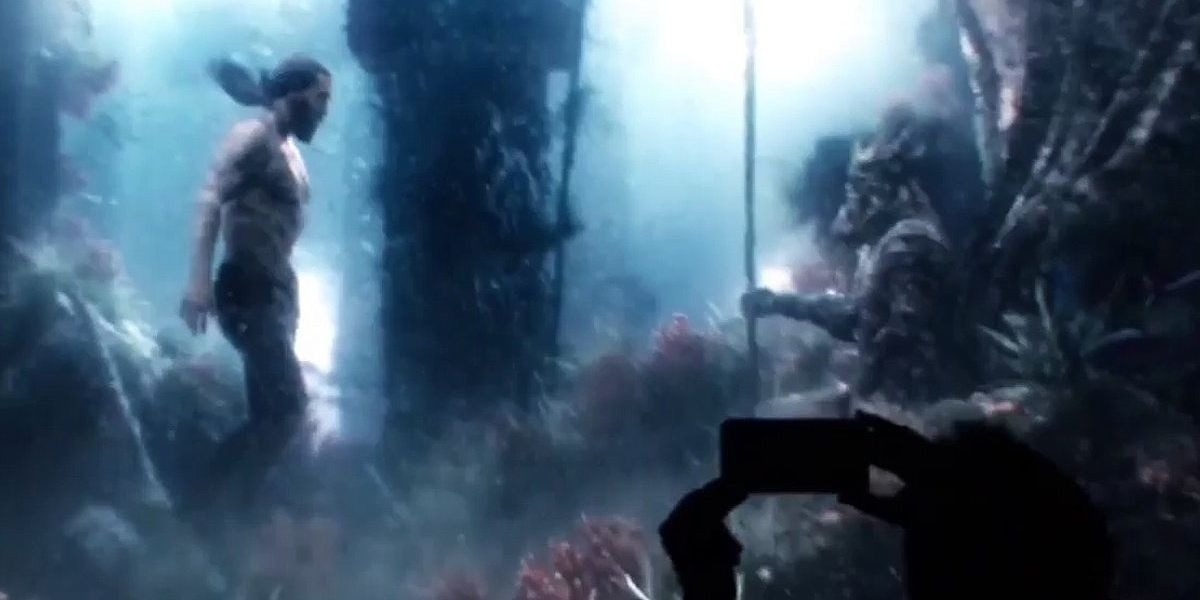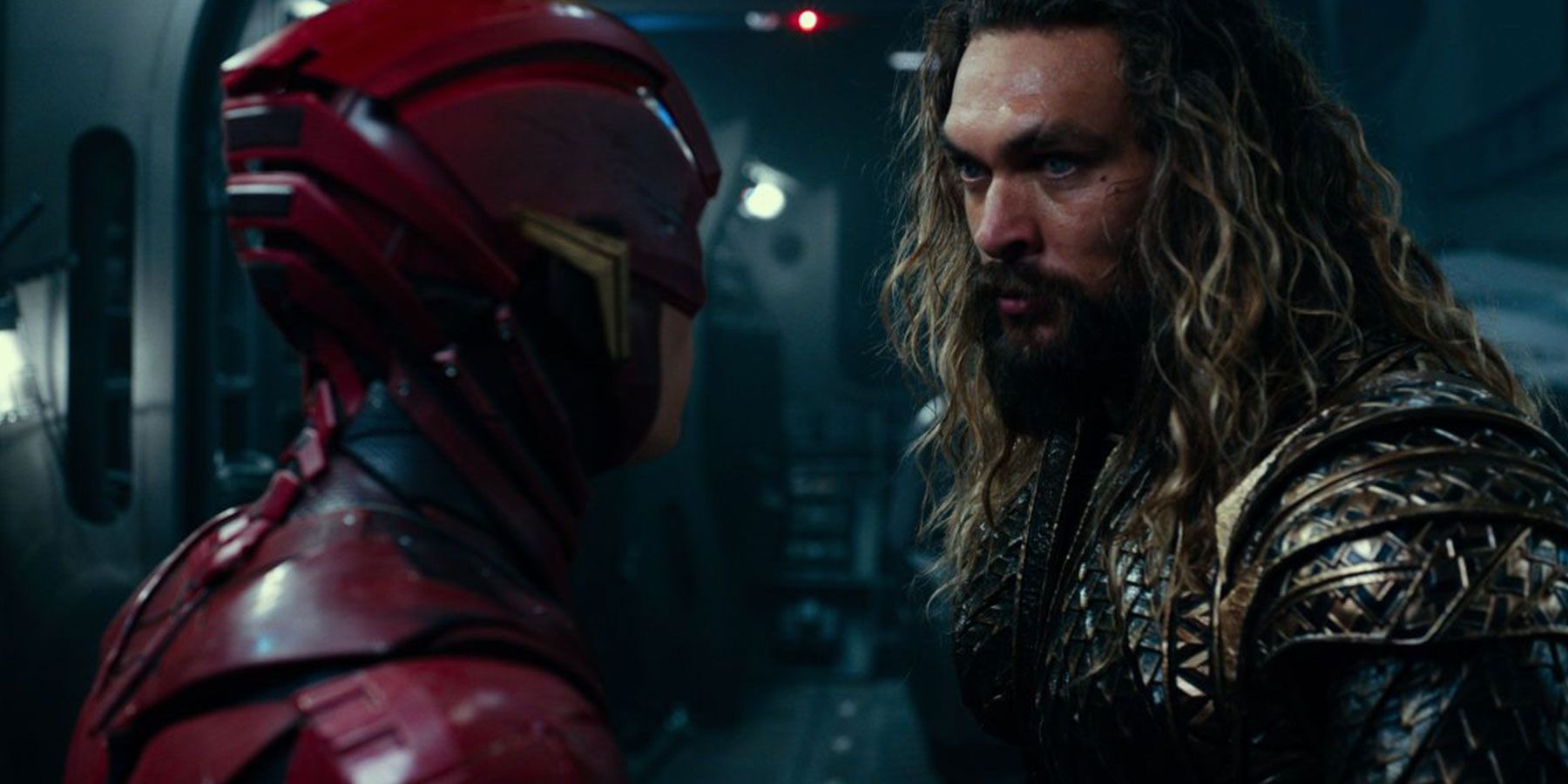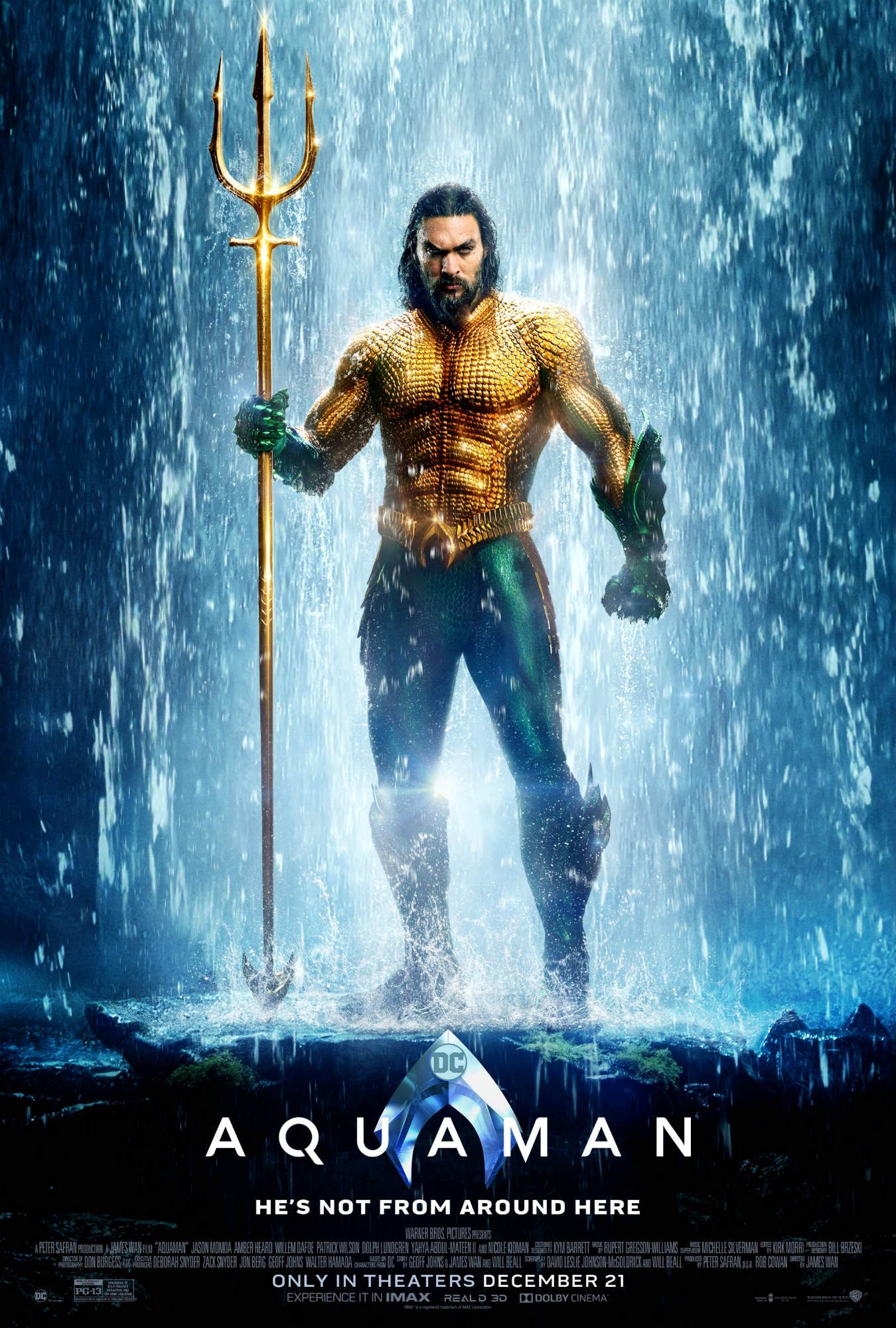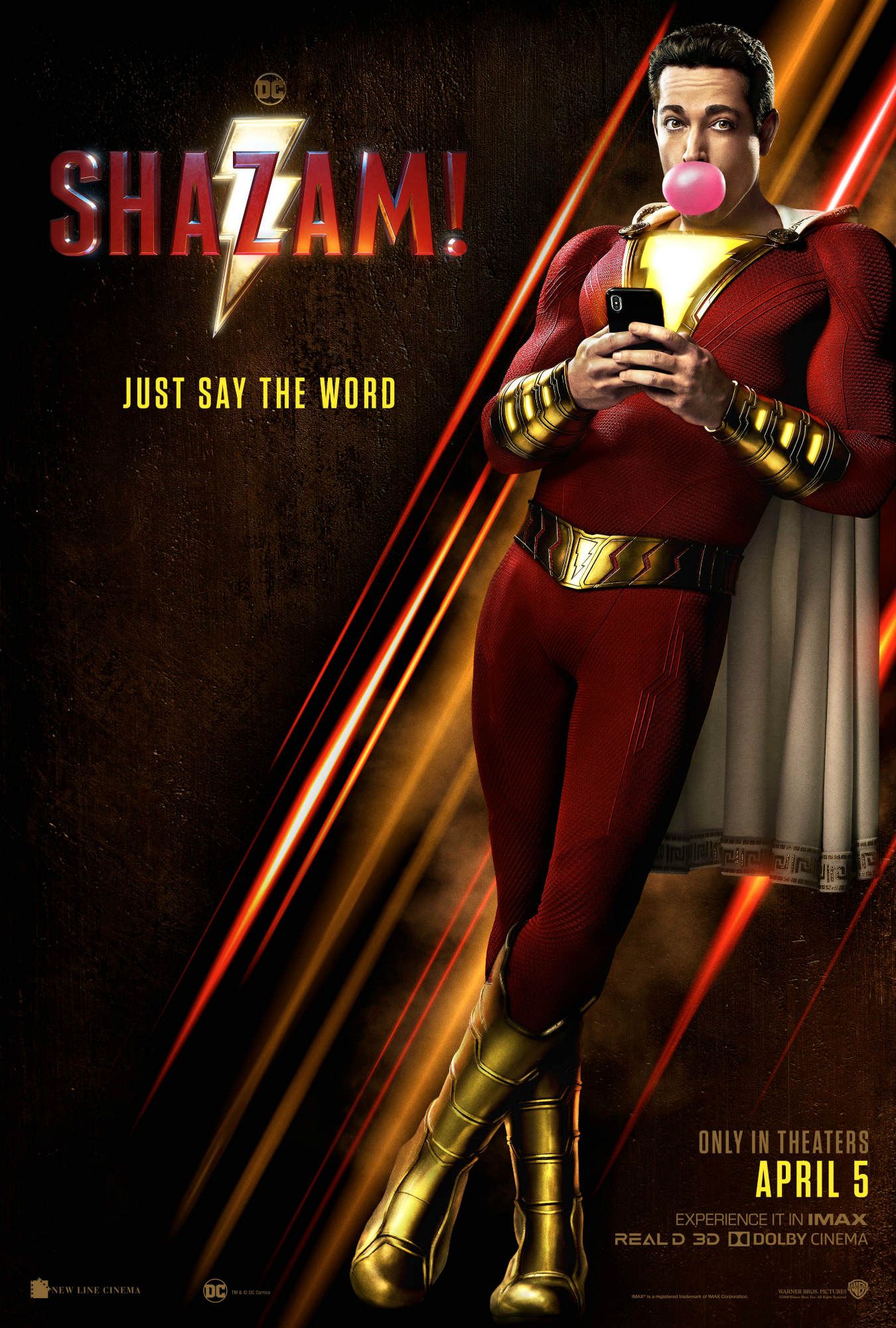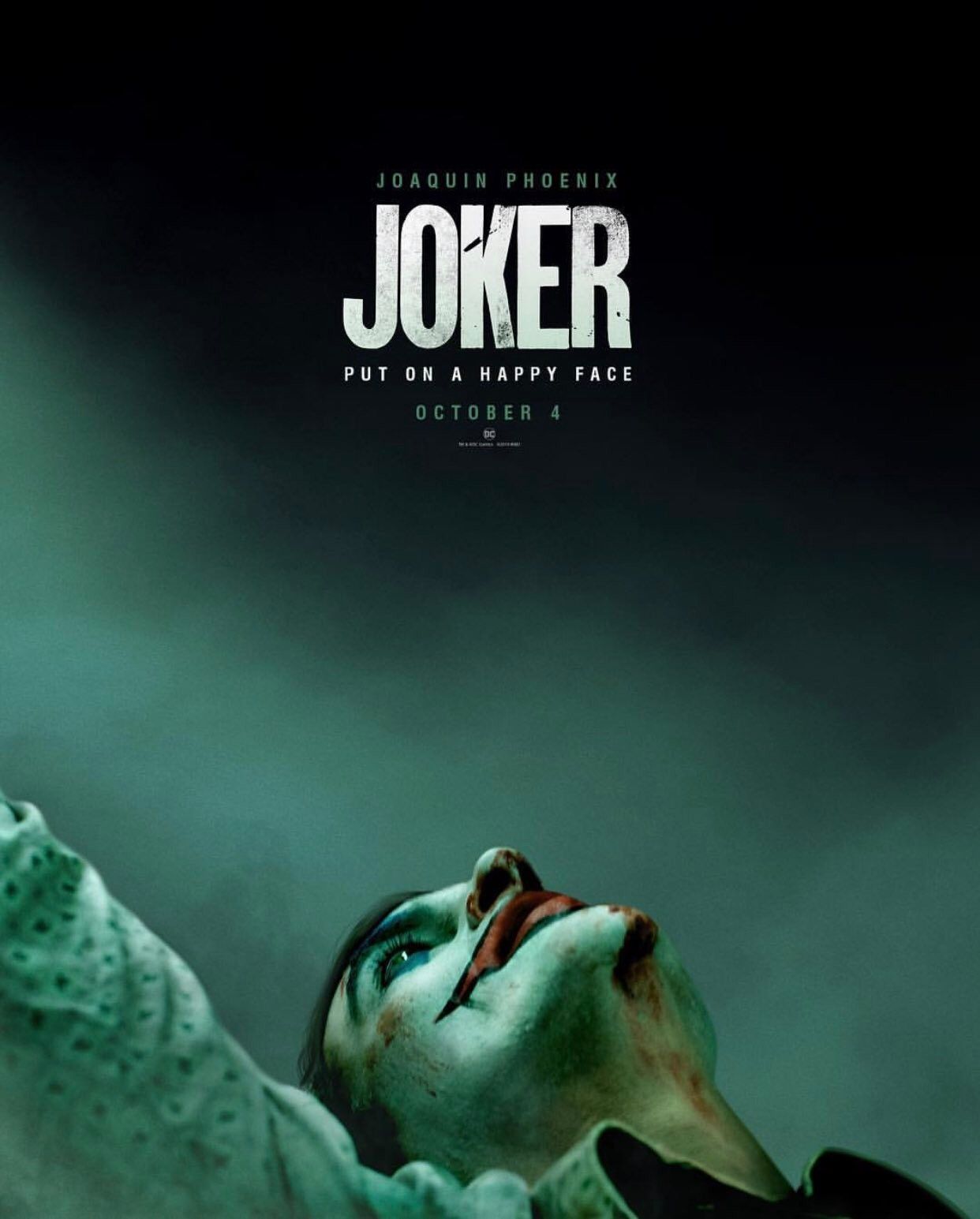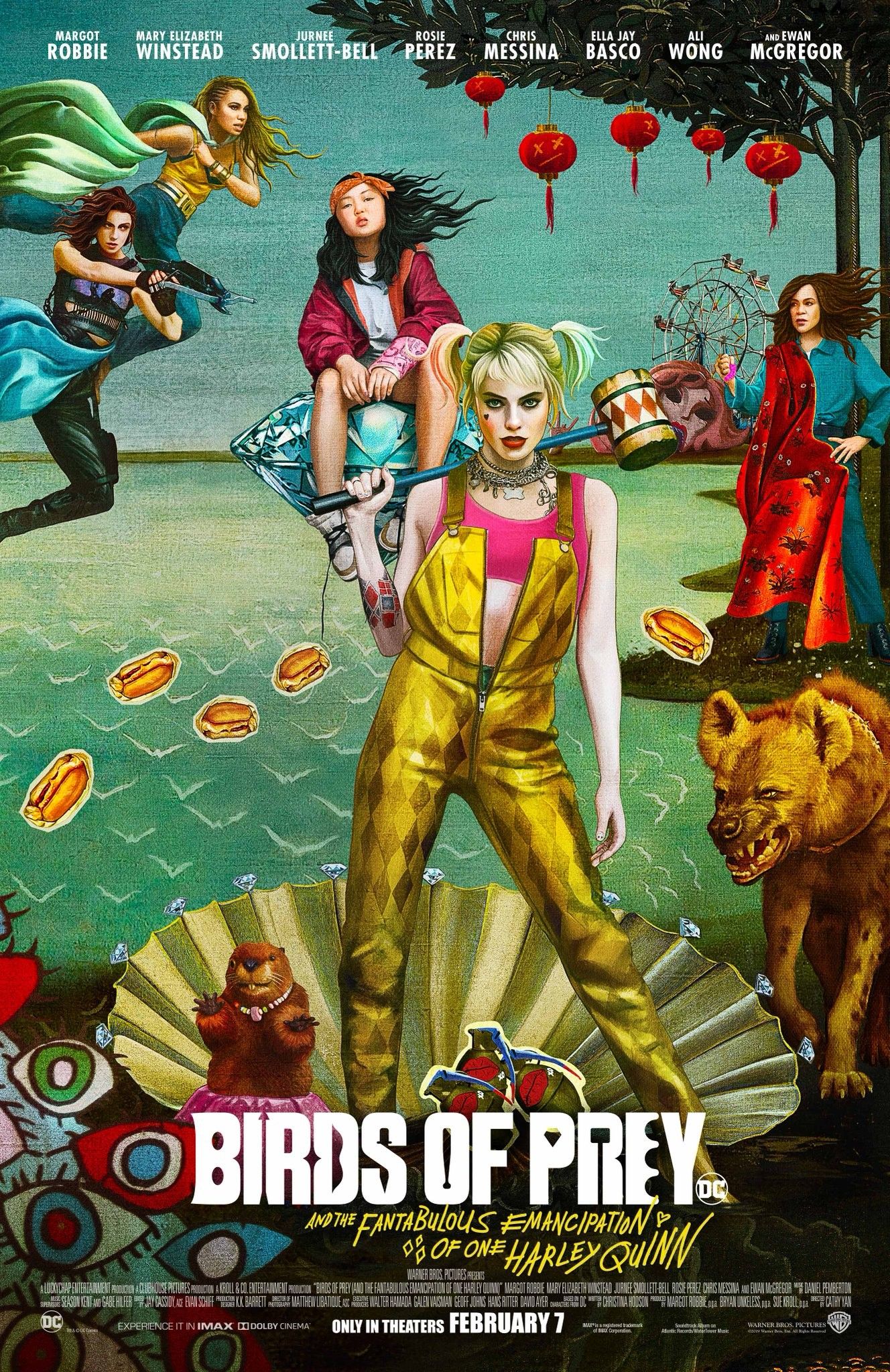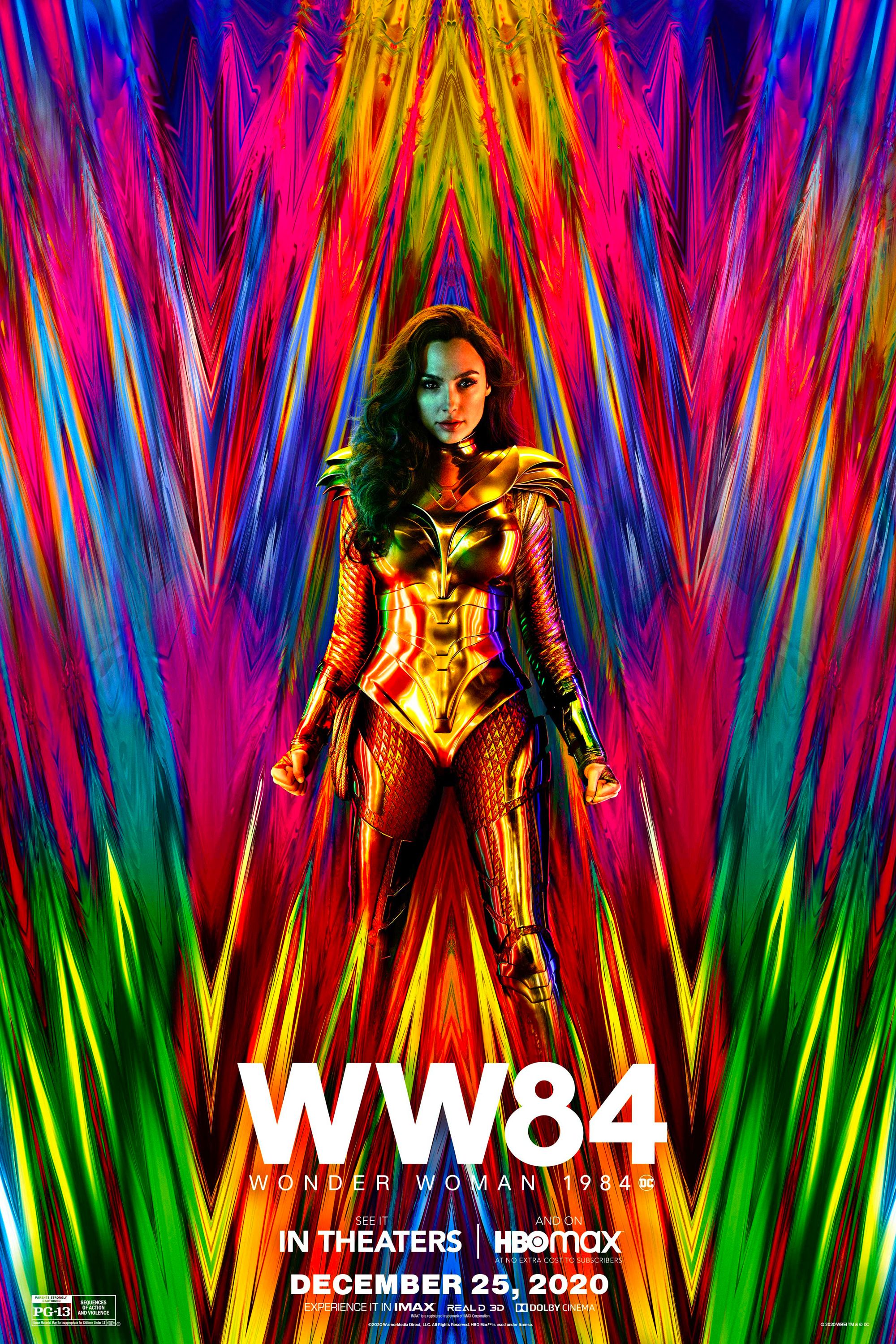The Zack Snyder cut of Justice League had Aquaman play a very different role to the theatrical release. When the original director left the film due to a personal tragedy, Warner Bros. publicly claimed that Joss Whedon was just finishing what Snyder had started. The truth, of course, was very different; Whedon conducted extensive reshoots that totally altered the vision for the DC team up. The final version of Justice League was a mishmash of different tones and styles, often lacking narrative cohesion - and with a lot of forced humor.
It's generally believed that Snyder had completed an initial cut of the film when he stepped back, and there's been a public - albeit unsuccessful and unlikely - campaign for Warner Bros. to release this. Aquaman star Jason Momoa has been one of several DC Films actors to vocally express his support for this campaign, and with good reason; he credits Snyder as the man who got him this job, considers the director to be a dear friend, and had a lot of his scenes cut from Justice League.
Related: Jason Momoa Won't Let Warner Bros. Distance Aquaman From Zack Snyder
With Aquaman heading into cinemas and Momoa teasing its connection to the Snyder Cut, the question of what exactly Warner Bros. changed of Arthur Curry's story in Justice League looms large. What elements were cut from the final theatrical release? And what was actually reshoots? Here, we'll examine everything that's currently known.
- This Page: How Aquaman & Atlantis Were Different in Snyder's Cut
- Next Page: The Lost Ending Of Justice League
Aquaman's Justice League Introduction Was Made Simpler (And Funnier) By Whedon
Although footage of Aquaman was shown in Batman v Superman: Dawn of Justice, his proper introduction is saved for Justice League. Unfortunately, this is one of the scenes where Whedon's reshoots are particularly visible; Whedon and Snyder have very different cinematographic styles, and as a result it's easy to see which moment was shot by which director (Whedon's are flatter, brighter, and clearly shot on a green screen). That gives Arthur Curry's first scene a strange, choppy quality that just doesn't quite work.
Even without the shooting differences, this exchange has several distinctively Whedon elements to it; the obsession with Bruce Wayne's wealth is a recurring gag, and it's likely Snyder had Batman make a very different appeal rather than offering money for an introduction to the Aquaman. The focus on Mother Boxes as simple MacGuffins was a Whedon extraction too, a way of simplifying and compressing the Justice League plot; the mural on the wall and Bruce's direct pleas about boiling oceans are reshoots. Clearly, the entire first meeting between Batman and Aquaman went very differently in the Justice League Snyder Cut.
Mera Had A Bigger Role In Snyder's Justice League
There's some evidence that Amber Heard's Mera originally had a much larger role in Justice League. A previs animation showed an extended version of the battle between Mera and Steppenwolf, with Mera using her hydrokinetic powers in some pretty creative ways. While this removed segment of the fight wouldn't have made any difference to Justice League's overall narrative, it substantially altered how audiences reacted to Mera during her first big screen appearance. In one particularly interesting moment, Mera attempts to use her power to draw moisture out of Steppenwolf's body, essentially dehydrating him. It's the same tactic she'd go on to use in Aquaman, when she drew moisture out of Arthur's body in order to activate ancient Atlantean technology.
Related: Aquaman Review: DC's Superhero Movie is a Wild & Goofy Ride
Additionally, Heard was on set when Justice League filmed in Iceland, with set photos showing she was in costume. That clearly suggests she filmed at least one additional scene; this may be a scene from the end of the film (which we'll get to) although could be evidence of an even bigger role.
Justice League's Underwater Scene Had Important Mythology Connections Removed
In addition to the stars of Aquaman, Zack Snyder's Justice League seems to have explored the mythology Atlantis in greater detail, with Arthur's journey into the see delving more into his heritage. Snyder released VFX footage showing Aquaman in an extended underwater sequence. Arthur was seen approaching a stone statue, seemingly dressed in the armor he would later wear when fighting alongside the Justice League. It was a clear nod to The Dead King, the entombed body of King Atlan, the first great ruler of Atlantis. No doubt this would have been a powerful scene, with Aquaman claiming his birthright when he donned his ancestor's armor.
Jason Momoa has suggested that this was one scene that featured Willem Dafoe as Vulko, the Atlantean nobleman who trained Aquaman as a warrior. "There's a place where [Aquaman] goes down to, and it got cut out of the movie," he explained. "[Arthur] knows spots where he can go and he can see these statues, the remnants of [Atlantis]. There's Vulko - obviously we'll have way more scenes with Vulko, Willem Dafoe - in Aquaman. There just wasn't enough time in this movie." The implication is that Vulko has been teaching Aquaman all about his royal ancestry, and even showed him the statues at some time. It even sounds as though Arthur and Vulko meet at the Statue of the Dead King. That said, it's probably a good thing this particular sequence was cut; it would contradict James Wan's portrayal of Arthur Curry in Aquaman, where he was yet to accept that he should be monarch of Atlantis.
Also changed by the Justice League reshoots in this sequence is the aforementioned fight between Mera and Steppenwolf, as well as the addition of the "air bubble" conversation; James Wan suggested around the time of the film's release that this was part of Warner Bros' changes to the film.
Page 2 of 2: Other Aquaman Reshoots - And The Lost Ending Of Justice League
Other Ways The Reshoots Changed Aquaman's Story
Given the sheer scale of Whedon's reshoots, the truth is that so many of Zack Snyder's Aquaman scenes will have wound up on the editing room floor, while plenty of additional photography featuring Momoa will have been shot in its place. In the Snyder version, for example, it's known that all the members of the Justice League went to retrieve Superman's body - presumably meaning it was an act of deep significance to the entire team, including Aquaman. Meanwhile, a number of deleted scenes have teased that the League was supposed to spend some time in S.T.A.R. Labs, with some images showing evidence of battle damage due to some sort of an action sequence. All of these will have affected Aquaman's role and perhaps arc in the film.
These were replaced by several character moments that were primarily played for humor. The most prominent example, of course, is Whedon's scene where Arthur unwittingly sat on Wonder Woman's Lasso of Truth; what followed was a bout of verbal diarrhea that unfortunately became Aquaman's most memorable moment in Justice League. Then there's another moment where Aquaman was a spectator to a confrontation between Bruce Wayne and Wonder Woman; Batman goaded Diana by bringing up Steve Trevor, and for a moment it looked as though the two superheroes would come to blows. Aquaman is present, and he's shown reacting by getting ready to join in. This second example may be a subtle one, but it points to an important fact; Aquaman's role, his dialogue, and even his body language will potentially have changed in any single scene that was reshot or added into the film. The third act was also reshot quite significantly, so all of Arthur's scenes in that were probably adjusted in some way.
Related: Justice League: Every Confirmed Change to Zack Snyder's Version
Curiously, some of the Snyder footage is actually being reused by Warner Bros, with YouTube end cards to the Aquaman trailer focusing on scenes not from the theatrical cut of Justice League. It seems Warner Bros. do believe Snyder's footage is good enough to use it a little in marketing, although it's difficult to place random shots in any given context.
The Ending Of Snyder's Justice League Set Up Aquaman
Zack Snyder recently took to social media to reveal a still of what would have been Aquaman's final moments in Justice League. This showed Aquaman striding away from Mera and another figure, likely Vulko. Jason Momoa has explained the scene, revealing that this was intended to be setup for Aquaman. Mera and Vulko had come to Arthur for help, and warned him that a force was coming that he alone could oppose - clear foreshadowing of Orm's attack on the surface world. To say Aquaman was disinterested is an understatement; he simply responded by telling them, "I'm going home to see my dad." According to Momoa, this was intended to signify that it had been quite some time since Arthur had visited his father, but he felt he needed to ground himself once again after the battle with Steppenwolf and the Parademons. Ironically, of course, the decision to go to his childhood home of Amnesty Bay took Aquaman straight into his half-brother's firing line.
It's interesting to note that Snyder initially intended there to be a straight narrative throughline between Justice League and Aquaman. In the end, of course, the connections between the two films became a little less notable; indeed, the only obvious tie between the two plots in James Wan's is when Mera makes a throwaway reference to Steppenwolf. Things, evidently, could have been very different.

